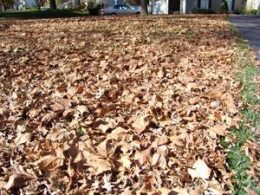 Continue reading “Central Kansas Market Grower & Vendor Workshop”
Continue reading “Central Kansas Market Grower & Vendor Workshop”
Tag: Horticulture
Winter Gardening?
Gardening inside in the winter! Yes, there are ways to garden inside in the cold winter months in Kansas. This idea is not so far-fetched if you consider growing selected citrus plants indoors. Most varieties of oranges and other citrus grown commercially in warm climates are too large to be grown indoors. There are several species that make good houseplants when cared for properly, however.
Lemon and lime are probably the best citrus to use for starting plants. Obviously, you will need fruit with seeds you can harvest from them. There are many varieties that are seedless so it may be an experiment for you to find seeds. You can try to experiment with tangerine. I have had some luck with grapefruit as well. The culture of citrus plants is not particularly difficult if the following requirements can be met.
Use a fertilizer formulated specially for acid-loving plants, mixed so it’s half the recommended strength. Fertilize the plant only when it is actively growing, usually April through August or September. Continue reading “Winter Gardening?”
Watering Houseplants
How do you water your houseplants? Every day? Each Tuesday? Fill a coffee cup and give it to your plants every once in a while? Houseplants are probably killed or injured more often by improper watering than by any other single factor. No general schedule can be used for watering all houseplants. Size of plant, pot, light, temperature, humidity and other conditions influence the speed with which the soil mass dries out. Continue reading “Watering Houseplants”
Christmas Tree Fun Facts
 I like talking and writing about trees! I hope you find this column both educational and interesting.
I like talking and writing about trees! I hope you find this column both educational and interesting.
Great Moments in Christmas Tree History:
- The use of evergreen trees to celebrate the winter season occurred before the birth of Christ.
- The first decorated Christmas tree was in Riga, Latvia in 1510.
- The first printed reference to Christmas trees appeared in Germany in 1531.
- Besides evergreens, other types of trees such as cherry and hawthorns were used as Christmas trees in the past.
- Using small candles to light a Christmas tree dates back to the middle of the 17th century.
- Thomas Edison’s assistant, Edward Johnson, came up with the idea of electric lights for Christmas trees in 1882. Christmas tree lights were first mass-produced in 1890.
- In 1900, large stores started to erect big illuminated Christmas trees.
- The tradition of an official Chicago Christmas tree was initiated in 1913 when one was first lit by Mayor Carter H. Harrison in Grant Park.
- The official Christmas tree tradition at Rockefeller Center began in 1933. Since 2004 the tree has been topped with a 550-pound Swarovski Crystal star. And since 2007, the tree has been lit with 30,000 energy-efficient LED’s which are powered by solar panels.
- Every year since 1947, the people of Oslo, Norway have given a Christmas tree to the city of Westminster, England. The gift is an expression of good will and gratitude for Britain’s help to Norway during World War II.
Keeping up your Lawn this Winter
If you have every visited with me and we have talked about watering lawns, or trees you know I have a philosophy of not wasting water and watering when plants need it not when it’s Tuesday.
Well here we are in winter, no snow has fallen or any moisture for that matter for some time. As of this column I have not seen any predicted rainfall or precipitation in the near future. While we don’t often think about watering plants in the winter during dry spells it may be necessary.
Be sure to thoroughly soak the soil around established trees and shrubs before the ground freezes in the fall. And, in the case of a dry winter, water during a mid-winter thaw when the ground isn’t frozen and a few days of mild weather are predicted (especially evergreens). Evergreens like pine and cedar have much smaller root systems compared to deciduous trees like oak and maple.
Be sure to disconnect and drain the hose when done watering to prevent freeze and cracking of lines. This may mean dragging out garden hoses in the cold and this is an inconvenience to you. However, hydrated trees will survive winter better and come out of winter undamaged from dry winter conditions if they have periodic irrigation in a dry winter.
Composting Leaves
 Everywhere I go I see leaves on the ground or in bags. The good thing is we don’t have to send all of our fallen leaves to the landfill but instead we can compost them at home and use in the garden later. Compost is a great addition to any garden! How is the composting process accomplished?
Everywhere I go I see leaves on the ground or in bags. The good thing is we don’t have to send all of our fallen leaves to the landfill but instead we can compost them at home and use in the garden later. Compost is a great addition to any garden! How is the composting process accomplished?
Microorganisms and small invertebrates account for most of the decomposition that takes place within the compost pile. With the required oxygen and water, these organisms break down yard and food wastes, producing carbon dioxide, heat, water, and soil-enriching compost in the process.
One way to determine success is to monitor pile temperature. During composting, the pile warms to 150° to 160° F. and gradually returns to ambient temperatures after organic materials decompose. Warm temperatures increase water evaporation. A decrease in the pile’s weight and volume is another way to measure composting effectiveness. Decomposing organisms include naturally occuring bacteria, fungi, and molds, and small invertebrate animals such as mites, millipedes, insects, and earthworms. With a wide range of organisms, there is a better chance that composted materials will be broken down completely. Aerobic bacteria, which require oxygen, are the most important decomposers in the compost pile. Continue reading “Composting Leaves”
Adding Organic Matter to Garden Soil
My experience with Harvey County lawns and gardens is that for the most part our soil is clay dominated and low in organic matter. Organic matter is needed in soil to increase soil drainage, make soil friable, create a better root growing zone for plants and provide some nutrients for plant growth. Organic materials can be applied directly to garden soil and incorporated with a plow or tiller, allowing decomposition to occur directly in the soil rather than in the compost pile. This time of year is an ideal time to do this when a variety of organic materials are available in the form of prunings, leaves, garden refuse, and lawn clippings. Continue reading “Adding Organic Matter to Garden Soil”
